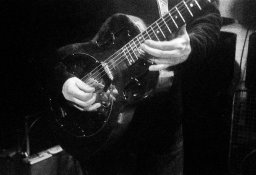Agulliver
Member
Here are some 35mm Delta 3200 shot at 3200 and developed in ID-11 which is essentially the same as D-76. I used two inversions per minute following Ilford's recommended development time.
"Shepherds Bush" and the band fronted by the guy playing flute were shot on a Praktica BX20S with Prakticar 50mm lens...the band pic with a 2x teleconverter. The resonator guitar was shot on an Agfa Super Silette. There is grain but it's rather pleasing to my eyes. Though I would more normally shoot HP5+ and push to between 1600 and 3200.



"Shepherds Bush" and the band fronted by the guy playing flute were shot on a Praktica BX20S with Prakticar 50mm lens...the band pic with a 2x teleconverter. The resonator guitar was shot on an Agfa Super Silette. There is grain but it's rather pleasing to my eyes. Though I would more normally shoot HP5+ and push to between 1600 and 3200.














